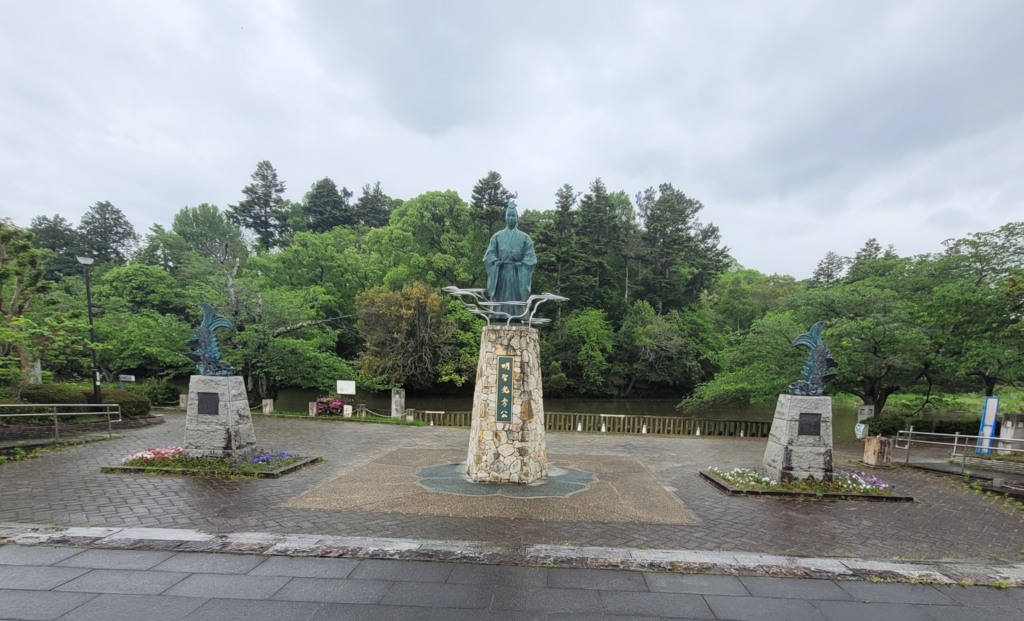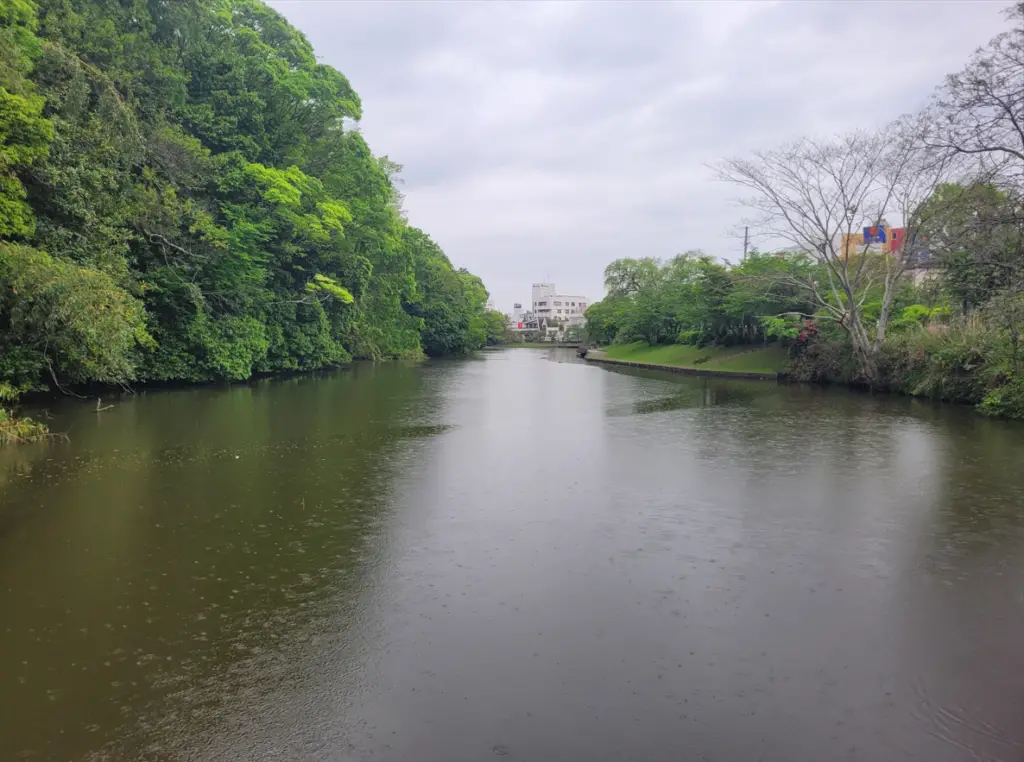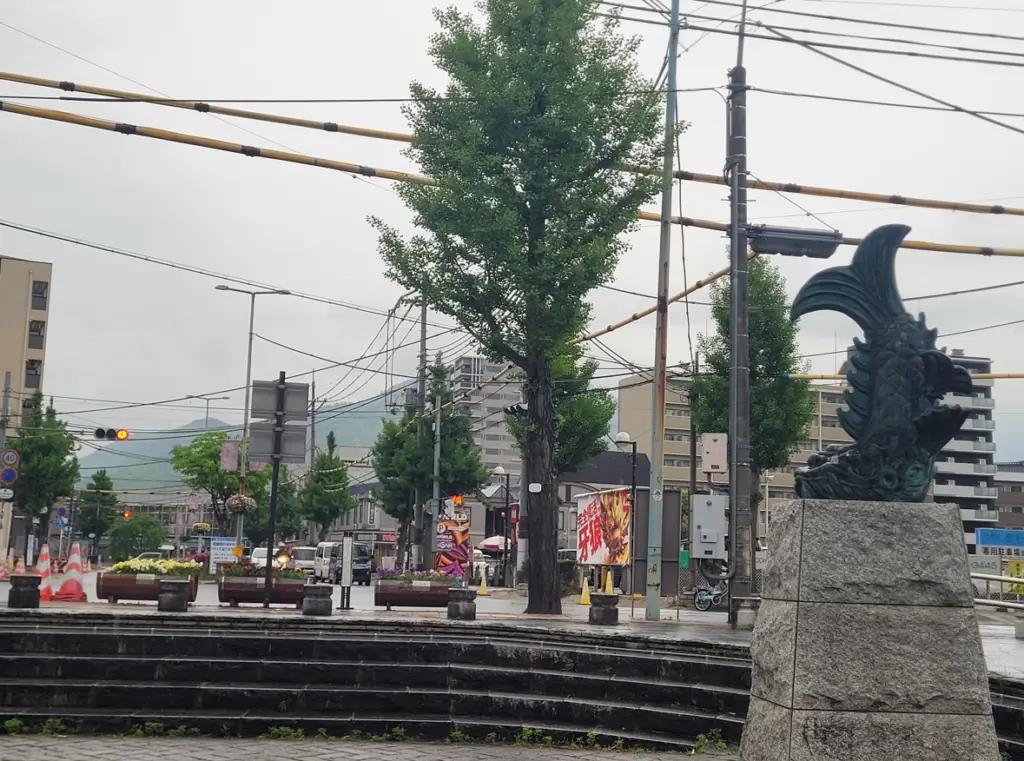Nango Park is home to beautiful well-kept gardens and the iconic statue of Akechi Mitsuhide which stands strong outside the Kameyama Castle.

A moat large enough to be called a river (seriously, the locals have called it “Misui River”), Nango Park is essentially a walking trail that circles this large body of water.
Easily accessed via Kameoka station, you can find Nango Park just one stop after the ever-popular Arashiyama on the Sanin Main Line (also known as the Sagano Line).
A Grand Entrance

A short walk from Kameoka station, finding the location of the park is super easy! Simply look for the large statue of Akechi Mitsuhide, one of Oda Nobunaga’s great retainers (who later betrayed and murdered him…but that’s a story for another time).
Lush Green Trees

Cherry blossoms in the spring, golden yellow leaves in autumn, and lush green trees during the summer, the colors of Nango Park’s trees are ever-changing!
Along the Misui River is a long walking trail through these thick trees where you can walk and enjoy the scenic views of this extensive castle moat.
I happened to visit Nango Park in the later days of spring after the cherry blossoms had withered away, but I did not expect the trees to be so lush and thick with rich green leaves to create a forest-like atmosphere.
Beautiful Gardens
Along the walk, there are plenty of colorful gardens on either side including purple and pink flowers.
Given its proximity to Kameyama Castle, these gardens are quite well-kept and maintained all year round.
They also give off a nice fragrance, particularly when they’ve been dampened by the rain, making the walk all the more pleasant.

Rest Areas

There are also plenty of rest areas around Nango Park including public toilets, vending machines, and seating areas.
It’s a good idea to sit by the gardens and soak in their beauty rather than rushing through them, particularly if you plan to walk the entire circuit.
Sadly, these aren’t your standard Japanese smart toilets, but they’re clean and efficient enough to get the job done.
The Blueprint of Kameyama Castle
The Tanba Kameyama Castle Ruins are what’s left of the once great Kameyama Castle, a gift by Oda Nobunaga to the samurai general Akechi Mitsuhide.
However, there is an interesting poster at Nango Park depicting visually what Kameyama Castle once looked like during the Sengoku Period.
While the text is all in Japanese, it’s fascinating to see the historic depictions of Kameyama Castle and its surrounding moat as you walk along the path and imagine what it was like hundreds of years ago.

Picturesque Views!

As you circle around the moat, you can enjoy stunning views of this large body of water with its thick green trees veiling the ruins of Kameyama Castle.
The fact that what now looks like a modern city was the place where many samurai battles would have taken place is a truly mesmerizing concept, and Nango Park captures this contrast brilliantly!
In the heart of Kameoka City!

I quite enjoy the dynamic of modern and traditional, and shots like these that depict the modern-day city of Kameoka while paying homage to the Sengoku Period through erected historic statues truly capture what Japan is all about.
A strong culture that never forgets its roots and a forward-thinking attitude that manages to keep up with modern developments, Japan continues to have a wide appeal to all kinds of visitors, and places like Nango Park do an amazing job of immortalizing this traditional-modern dynamic.
Of course, if you are planning to visit Japan, you’ll need a way to get around the country as efficiently and affordably as possible. Japan Rail provides an abundance of travel passes to suit your travel needs. So whether you are traveling individually or as a group, the JR Pass is every traveler’s go-to for getting around and making the most of your time in Japan!
